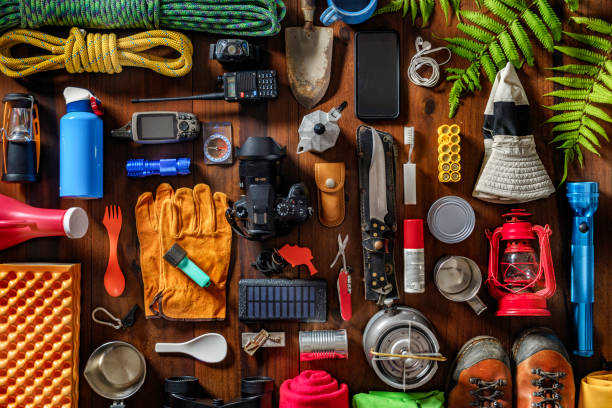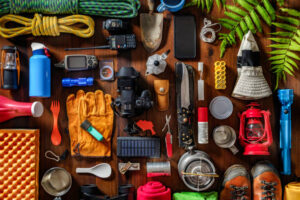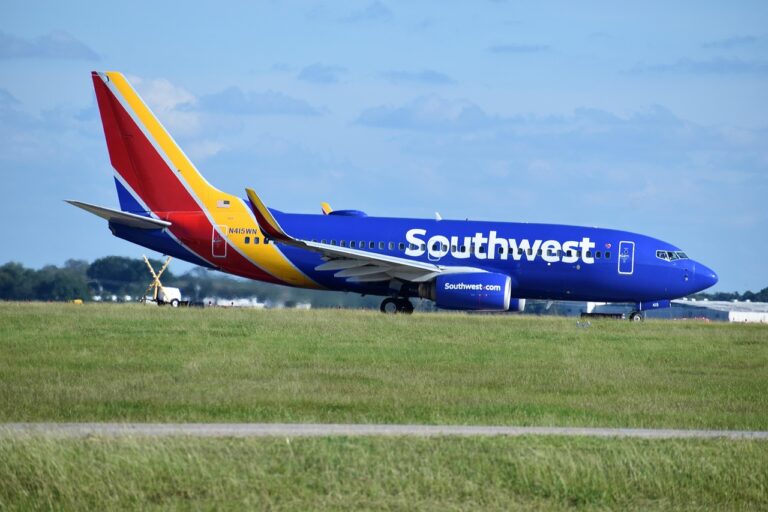Last Updated on April 3, 2024 by ETC Team

Backpacking —venturing out onto the trail with nothing but life’s essentials in your pack—is the classic adventure when outdoors.
When you begin to plan for this type of adventure, you first need to determine what you will bring. Consider how far you plan to hike, how remote the location is and always check the weather forecast. The amount of gear, clothing, food and water you’re going to want will depend on several factors. The longer and/or more remote the hike is and the type of weather you will encounter, just to name a few.
If you are just getting into backpacking adventures, be sure to read Backpacking for Beginners before you hit the trail.
What To Bring Backpacking
These items are essential and should be included on your backpacking checklist:
- Hiking boots or shoes
- Backpack
- Tent
- Sleeping bag and sleeping pad
- Stove and fuel
- Kitchen supplies
- Ample food
- Water containers and water-treatment supplies
- Weather-appropriate clothing
- Emergency and hygiene supplies
- Repair kit
Backpacking Gear
A backpack that comfortably holds 30-50 liters is sufficient for overnight trips. If your trip is planned for multiple nights, choose a pack in the higher range. The essential, must have items are marked with an asterisk (*).
| Backpacking Gear |
|---|
| Backpack with raincover |
| Backpacking tent (with stakes, guylines) |
| Sleeping bag (with stuff sack) |
| Headlamp or flashlight * (with extra batteries) |
| Optional |
|---|
| Trekking poles |
| Packable lantern |
| Tent footprint |
| Pillow |
| Bear spray |
Backcountry Kitchen
You won’t always be on the trail or on the go. Your backpacking base camp will need kitchen essentials for proper meal-prep. Supplies for clean-up and food storage will also be necessary.
| Backcountry Kitchen |
|---|
| Backpacking stove |
| Fuel |
| Cookset (with pot grabber) |
| Dishes/bowls |
| Eating utensils |
| Mug/cup |
| Biodegradable soap |
| Quick-dry towel |
| Collapsible water container |
| Bear canister/food sack or 50’ Paracord and hang bag |
Food & Water
When on the trail, you’ll want snacks like energy bars, jerky, nuts and cheese in your pack. These snacks are easy to eat on the go but are also high in protein to keep you going. For lunch, plan on a proper snack break.
You will need to transport water. How much depends on water sources available to you on your hike. Plan accordingly and follow the general recommendation of drinking a half liter of water per hour of moderate activity in moderate temperatures. You will need to purify your water if you plan to collect water in the wild.
| Food & Water |
|---|
| Water bottles and/or reservoir * |
| Water filter/purifier or chemical treatment * |
| Meals |
| Energy food and drinks (protein bars, gels, chews, trail mix, drink mix) |
| Extra day’s supply of food * |
Clothing & Footwear
There is no such thing as bad weather, only bad clothing decisions. Always check the weather and make sure to dress for the conditions. Be prepared for changing weather conditions by packing extra clothes beyond those needed for the trip. It is also important to account for the ultraviolet rays from the sun. The clothing you pack should provide adequate protection from the sun. For footwear, the terrain will determine what to wear. For light hikes on flat, smooth paths, hiking shoes or trail runners are sufficient. If your adventure includes traversing rocky or rugged trails, proper hiking boots should be the choice.
| Clothing & Footwear |
|---|
| Moisture-wicking underwear |
| Moisture-wicking T-shirt |
| Quick-drying, rip-stop pants/shorts |
| Long-sleeve shirt (blocking sun and bugs) |
| Lightweight fleece or jacket |
| Boots or shoes appropriate for terrain |
| Socks (wool or synthetic) |
| Extra clothes * (more than minimum for length of trip) |
| Additional items for rainy and/or cold weather |
|---|
| Rainwear (jacket and pants) |
| Long underwear |
| Warm, insulated jacket or vest |
| Fleece pants |
| Gloves or mittens |
| Warm Hat |
| Optional |
|---|
| Sandals (water shoes and/or camp shoes) |
| Bandana or neck buff |
| Gaiters (for rainy, snowy or muddy conditions) |
Navigation
Navigation is essential for a backpacking checklist. Your safety is of upmost importance and knowing where you are at all times is vital. The type of trip you are planning and your personal preference will determine exactly which items you will bring. It’s fine if you prefer a device like a GPS, just be aware that it’s not a substitute for Topo map and compass.
| Navigation |
|---|
| Map * (stored in a waterproof sleeve) |
| Compass |
| Optional |
|---|
| Route description or trail book/guidebook |
| Watch |
| GPS * |
| Personal locator beacon/satellite messenger * |
Emergency Shelter & First Aid
Another item that is considered essential is an emergency shelter. You will most likely have a tent, but the ability to provide shelter for situations away from base camp is important. This could be an emergency or a day hike away from camp. Don’t forget a necessary prescription medications you my need. And if bugs bug you, insect repellent can make your trip more enjoyable.
| Emergency shelter & First Aid |
|---|
| First-aid kit or first-aid supplies * |
| Emergency whistle |
| Lighter/matches (in waterproof container)* |
| Fire starter (for emergency survival fire)* |
| Emergency shelter |
| Two itineraries: leave one with a friend & one in the car |
Health & Hygiene
The simple comforts of home make backpacking a breeze.
| Health & Hygiene |
|---|
| Hand sanitizer |
| Toothbrush |
| Sanitation trowel |
| Toilet paper/wipes and sealable bag (to pack it out) |
| Menstrual products |
| Prescription medications |
| Prescription glasses |
| Sun/UV protection |
|---|
| Sunglasses * |
| Sunscreen |
| SPF-rated lip balm * |
| Sun hat * |
| Optional |
|---|
| Insect repellent * |
| Over-the-counter remedies |
| Additional blister treatment supplies |
Backpacking Tools & Repair Items
Save your hands while backpacking with a good multi-tool.
| Tools & repair items |
|---|
| Knife or Multi-tool * |
| Repair kit (include air mattress/stove supplies) * |
| Duct tape strips |
Backpacking Extras
These items are considered optional because you‘lol need to decide how heavy your pack can be. These items will help pass the time or expand your backpacking exploration.
| Backpacking Extras |
|---|
| Daypack (for trips away from camp) |
| Camera or trail cam (with extra memory cards) |
| Interpretive field guides |
| Star chart/night-sky identifier |
| Trip journal with pen/pencil |
| Book/magazine/reading material |
| Cards or games |
| Compact binoculars |
| Two-way radios |
Personal Items
Whether you are backpacking familiar trails or going for a full off-grid adventure, you should still carry some basic personal items.
| Personal Items |
|---|
| Permits (if needed) |
| Credit cards and/or cash |
| ID |
| Car keys |
| Cellphone |



